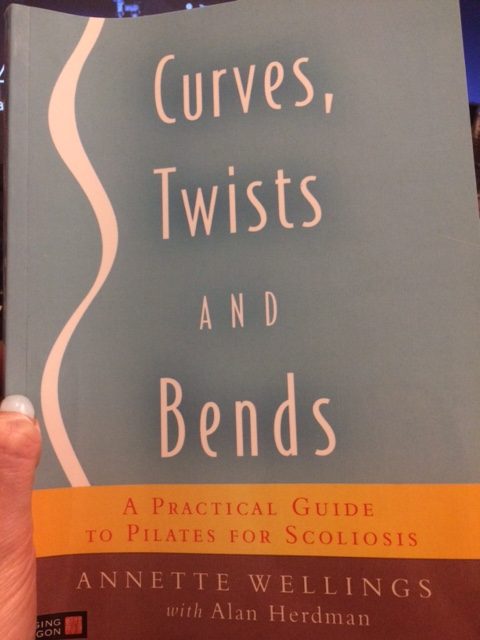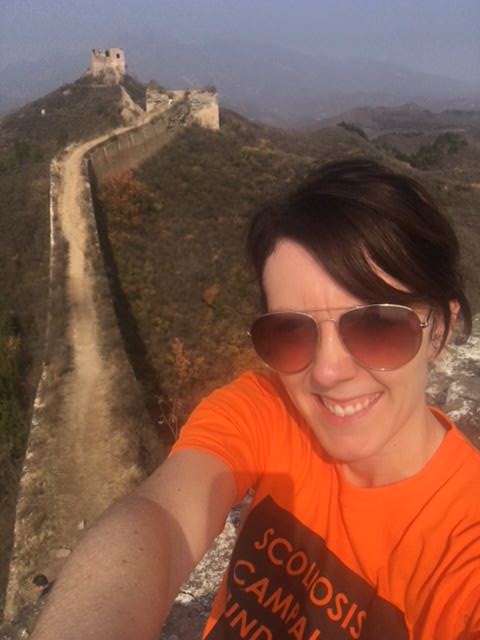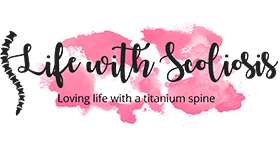
Pilates for Scoliosis: Review of Curves, Twists and Bends

This post contains affiliate links
I recently purchased the above book from Amazon “Curves, Twists and Bends: A Practical Guide to Pilates with Scoliosis” and thought I’d share my honest opinion.
Pilates is something I’ve always wanted to get into, as I know it’s important for me to have a strong core. I have been to the odd Pilates class over the years but I’ve always left feeling underwhelmed.
The issues I’ve had with Pilates classes are:
- Some Pilates exercises I can’t do due to my fused spine.
- The classes have been too big for one-on-one guidance.
- I’ve worried about doing the exercises incorrectly due to my scoliosis.
- I’ve felt embarrassed being singled out due to my “condition.”
This year however, I really want to focus on strengthening my core muscles and maybe giving Pilates a chance. I feel like this is especially important because I am starting to get into running again. They do have Pilates classes at my gym but I don’t fancy going for the above reasons. Also, I feel like I need to be taught by someone who has experience in teaching people with scoliosis to truly benefit.
So…I had a bit of a look online and came across this Pilates for scoliosis book on Amazon and thought I’d give it a try.
What I like about this book..
- It’s written by Annette Wellings, who suffers from major scoliosis herself and is a trained Pilates instructor. This reassures me that she understands scoliosis and that the exercises are tailored to help scoliosis.
- It explains very clearly and in detail the causes of scoliosis pain, and provides specific exercises to target specific “bossy” and “underdeveloped” muscles that develop as a result of scoliosis. I found this part of the book really interesting as it helped me to understand why I get the pain I do.
- The exercises are categorised into 7 categories:
- The basic top 10.
- Stretches.
- De-rotation exercises.
- Lengthening exercises.
- Letting go of the bossy muscle.
- Teaching the weak side to talk.
- Pelvic Stability.
This is useful because you can choose the exercises that suit your particular situation (see below).

- The book features easy to follow “stick person diagrams” to illustrate how to do each exercise (shown below).

- Most exercises can be performed whether you have had scoliosis surgery or not. The ones that may be difficult for those who have had scoliosis surgery are specified.
- There are so few reliable resources out there on Pilates for scoliosis, that it’s a breath of fresh air to actually have a book with Pilates exercises tailored for scoliosis.
What I wasn’t so sure about..
- As the book is aimed at the general reader, there is quite a lot of information at the beginning of the book about scoliosis. For example, what it is, types and causes. I didn’t really find this useful as I already knew most of it and just wanted to get into the exercises.
- Some of the exercises aren’t relevant to people that have had scoliosis surgery (although it does state).
- While the stick diagrams are good, it may have been clearer to supplement some of the exercises with pictures/photographs of someone performing them.
- Towards the end of the book there’s a chapter called “Strategies for Living with Scoliosis.” Again, while some parts of it could be useful for someone who hasn’t had surgery (e.g. clothing advice), I thought this wasn’t really that relevant if you’ve had surgery to correct scoliosis, or you’ve been living with scoliosis for a long time. On the other hand, if you’ve been recently diagnosed with scoliosis, this information would probably be very useful.
Overall..
For me, there was a lot of information in this book that I already knew and wasn’t really relevant. I think if you’ve had scoliosis for a while you’ll probably already know about it and how to cope with the condition. However, the section explaining the psychology of scoliosis and understanding scoliosis pain was really interesting.
There aren’t many reliable resources out there for Pilates for scoliosis – especially for people who have had the surgery. Therefore, the exercises in the book will be useful for anyone with scoliosis, whether you’ve had surgery or not.
They are gentle, low impact exercises and stretches designed to improve muscle strength and reduce the pain and muscle tightness associated with scoliosis.
It has good reviews on Amazon and is pretty good value so I would definitely recommend if you are looking for some safe Pilates exercises to help with scoliosis.
I think this book would be of particular use to those who have recently been diagnosed and want to learn more about the condition and ways to manage pain.
Related Posts
My Favourite Scoliosis Exercises
Disclaimers:
This article is not intended to substitute for informed medical advice. You should not use this information to diagnose or treat a health problem or condition. Always check with your doctor before changing or starting a new fitness routine.
The exercises listed in this article are intended to be helpful for those who have either not had scoliosis surgery or who have fully recovered. They will not be suitable for everyone with scoliosis. I accept no responsibility or liability for any injuries caused directly or indirectly through the performing of the exercises described. If you feel any discomfort or pain during any exercise, stop immediately.
If you have recently had scoliosis surgery, speak to your Dr/physiotherapist in order to get tailored exercises for you while you recover. You will need to be very careful and it will probably be difficult to do anything other than walking and simple exercises for a while. (Remember NO bending, lifting or twisting for at least 6 months following scoliosis surgery).

I had scoliosis surgery in 2010 and blog about my experiences living with scoliosis. My aim is to raise awareness of scoliosis and help and inspire others with the condition.

